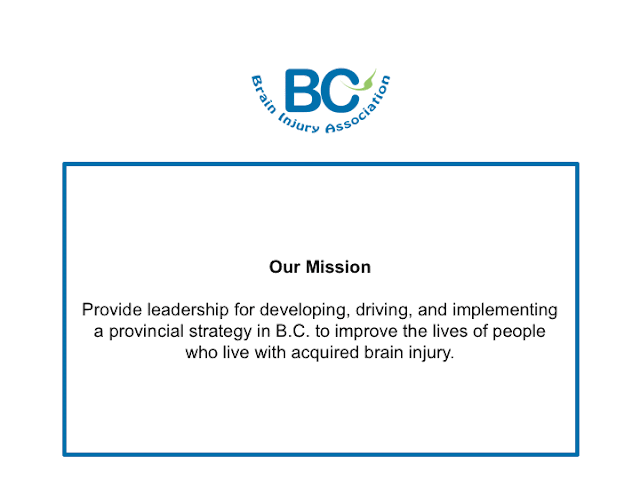Vision Statements: Gotta love 'em. Gotta hate 'em.
When it comes to creating a strong vision statement, the range of opinions out there is mind boggling. On top of that, the emotions people express on this topic are right across the board: from love, to hate, to complete indifference. And when you look at all the advice on what should go into a strong vision statement, no wonder the task scares people off.
What's the big deal? Why are there so many failed attempts at articulating a vision. Here are some more common reasons.
Why do vision statements fail?
Vision by Committee
Too often leaders confuse the act of crafting a vision with word-smithing a statement. They shuttle their leadership team off to a retreat and start messing around with words that are supposed to end up on a poster. The problem is, they have missed the point. It's not about crafting copy. It's about inspirational leadership. Vision by committee doesn't work.No Vision? No Statement
At the risk of stating the obvious, one of the biggest challenges with writing a vision statement is not having a vision in the first place. Sometimes the CEO is rooted in the here and now, not the future. He or she is 'on a mission'. Other times they struggle to articulate the future they envision in clear and succinct terms. They're just not ready to share it. And if you are not ready? Don't.
Classic Vision / Mission Mix up
Organizations commonly confuse the role of vision with mission, resulting in two very similar statements that seem redundant. In a nutshell,- Mission = your purpose TODAY, your raison d'être.
- Make your mission statement INFORMATIVE.
- Vision = your view of a better FUTURE. A 'True North' to guide you.
- Make your vision statement INSPIRATIONAL.
'Templatized' Consultant-speak
We consultants (yes, I include myself in that pool) love to get our hands on a 'vision gig'. Collectively, we have spawned endless varieties of methods, frameworks, and templates to get the job done. The good ones know how to help you with the gotchas and let you do the inspiring. Unfortunately, there are still too many well meaning consultants that get fixated on the template.How do you create a strong vision statement? Start by avoiding the gotchas. Here are some things to consider.
How do you create a strong vision statement?
One leader. One vision.
As noted above, vision by committee doesn't work. You are the leader. It's your vision. The process can still be very inclusive. There are engaging ways to align your team with your view of the future. You will want to draw inspiration from their thoughts. At the end of the day, that culmination of inspiration comes from you. The statement itself is merely a best effort at capturing the essence of your vision.Shape it BEFORE you state it
Forget the statement; focus on the vision itself. Take the time to explore your view of a better future. Tap into what inspires you. Think of it as a story that needs to be told. Consider these characteristics, NOT as what get jammed into a single statement, but as elements of a story that will inspire the statement to be crafted. Your story should be...
- Future-facing: looking out to the future. Pick a time horizon that makes sense to you. Don't be afraid to look as far as 3-5, even 10 years out.
- Audacious: it challenges those will follow you to go beyond what is already possible today. It is an invitation to greatness, a demanding and worthy goal that unites us.
- Directional: it shows where you are headed, and provides a “north star” by which everyone in the organization navigates. It points the way for taking a journey, taking action.
- Purposeful: it is tied to a greater sense of purpose, a cause worth pursuing. It answers why anyone should care. An effective vision makes people feel connected to something meaningful, something bigger than themselves.
- Imaginable: an effective vision invokes in others a vivid mental image of what the desired future looks like.
- Clear: wording and meaning (i.e. content and context ) are easily understood.
- Relevant: an effective vision connects to both the organization's current reality and the times we live in. It reflects a needed response to challenges we face today.
- Value-based: it is deeply connected to unwavering beliefs and ideals that are fundamental to the culture of the organization and its people. You need this if you want anyone to follow.
- Inspiring: it is emotionally moving and compels people to commit to a cause. Your vision appeals to both our hearts and minds.
Align Mission to Vision
Mission is not only about informing others of your purpose; it is also a starting point for pursuing your vision. It is where, every day, you and your team are on a journey. Assuming your current raison d'être is readily understood, there are plenty of good templates for stating that. What may not be so evident is how every day your mission is a first step into the future. Sometimes that needs to be adjusted. That's where you come in. Through the story of your vision, you connect the people to a greater purpose.
Own it. Live it.
As your vision takes shape, be prepared to ask for assistance: capturing your story; engaging others in the process; realigning the mission. You may want to delegate some of the storytelling to talented copywriters or videographers that help to bring your vision to life. Out of all that, you'll get a useful vision statement. The one thing you can't delegate is living it, pursuing the vision every day. You must lead for them to follow. The statement on the wall is merely a reminder of the journey you have chosen.



Comments
Post a Comment